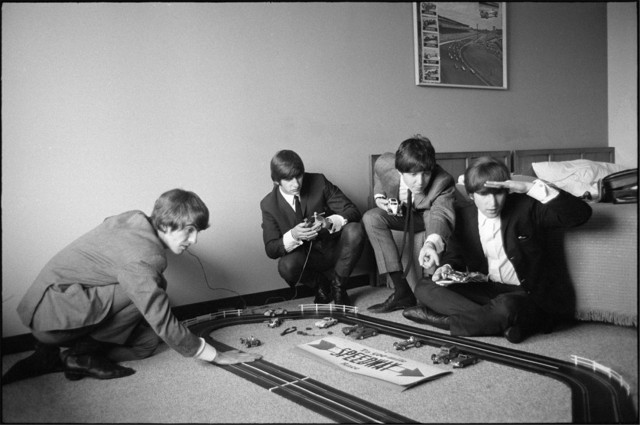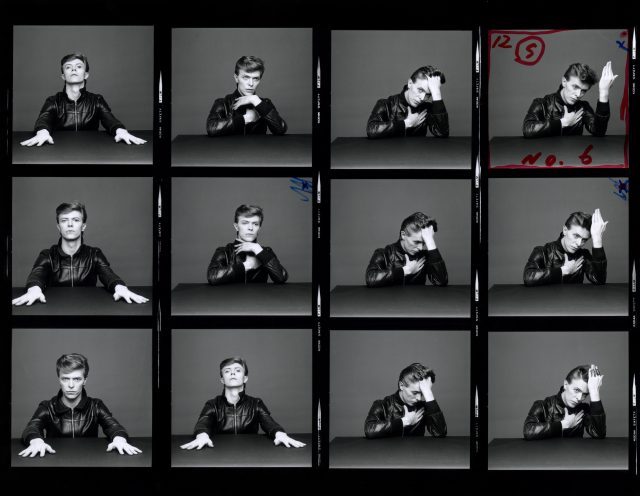
Heroes contact sheet, 1977 (photograph by Masayoshi Sukita. © Sukita/The David Bowie Archive)
Brooklyn Museum
200 Eastern Parkway at Washington St.
Morris A. and Meyer Schapiro Wing and Iris and B. Gerald Cantor Gallery, fifth floor
Daily through July 15, $20-$35
212-864-5400
www.brooklynmuseum.org
Any major career survey of gender-bending, genre-redefining, multidisciplinary, intergalactic superstar David Bowie must be innovative, unique, cutting-edge, and unusual, for nothing less would do justice to the man born David Jones in Brixton in 1947. The Brooklyn Museum’s “David Bowie is,” the most successful exhibition in the institution’s history, is just that, an illuminating exploration of the actor, musician, singer-songwriter, fashion icon, painter, video artist, husband, father, and more. Given unprecedented access to Bowie’s personal archive, the wide-ranging, highly ambitious, immersive multimedia presentation collects hundreds of items, from sketches of his parents to his baby pictures, from handwritten lyric sheets to books that influenced him, from posters of his early bands to drawings of his costumes and sets for live performances, among a multitude of other memorabilia and paraphernalia. One section is devoted to a single song, “Space Oddity,” with video, photographs, screenprints, album artwork, music sheets, related toys, and more, another looks at his various stage personas (the Thin White Duke, Ziggy Stardust, Hamlet), and another explores his work in film and theater, including Labyrinth, The Man Who Fell to Earth, The Elephant Man, The Last Temptation of Christ, Basquiat, and The Image. A five-minute clip from the 1969 promotional film Love You till Tuesday features “The Mask (A Mime),” in which Bowie performs as a mime.
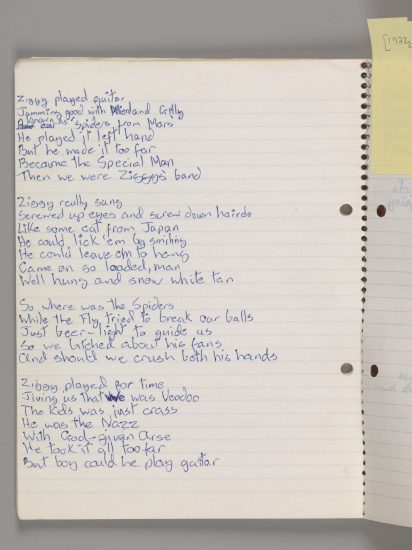
Original lyrics for “Ziggy Stardust,” by David Bowie, 1972 (Courtesy of The David Bowie Archive. Image © Victoria and Albert Museum)
Organized by the Victoria and Albert Museum in London, the show gets everything right that MoMA’s 2015 disaster, “Björk,” got wrong. Purchasing timed tickets in advance, visitors traverse the exhibition at their own pace and in whatever order they would like, wearing headphones that, in a move of genius, react to where they are physically. Thus, when you’re in front of a video screen depicting Bowie performing “The Man Who Sold the World” on Saturday Night Live, that is what you are hearing. Turn around and take a few steps in any direction and the audio will switch to whatever you are now looking at, whether it’s an interview with designer Kansai Yamamoto, Bowie’s preparations for the never-made Diamond Dogs film, or a small room dedicated to his final record, Blackstar. There is something to experience in almost every nook and cranny, so sometimes it is fun to let the audio guide you, attracted by what you hear instead of what you see.
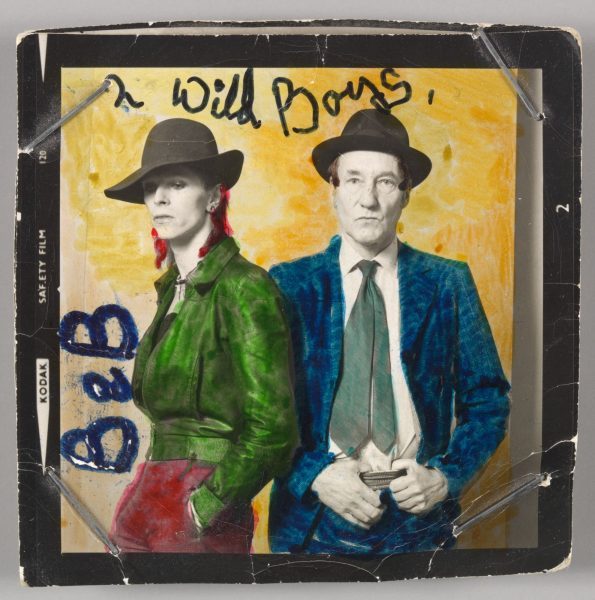
David Bowie with William Burroughs, February 1974 (Photograph by Terry O’Neill with color by David Bowie. Courtesy of The David Bowie Archive. Image © Victoria and Albert Museum)
Among the items to watch out for are a series of line drawings that serves as an artistic conversation between Bowie and Laurie Anderson; Guy Peellaert’s original painting for the Diamond Dogs album cover; the original lyrics to “Rebel, Rebel”; a Bowie painting of Iggy Pop in a Berlin landscape; a letter from Jim Henson to Bowie about Labyrinth; a John Lennon sketch (“For Video Dave . . .)”; Bowie’s script for the Lazarus musical; a Bowie doodle on a cigarette pack; a telefax from Elvis Presley; and Bowie’s charcoal drawing of his adopted home, New York City. The exhibition culminates in high style in a room blasting the original “Heroes” video and live footage of “Rebel, Rebel” from the Reality Tour and “Heroes” from the Concert for New York City, headphones off, everyone experiencing transcendence as one. “Though nothing, nothing will keep us together / We can beat them, forever and ever / Oh, we can be heroes just for one day,” Bowie declares, leaving behind a remarkable legacy that will continue to keep people together, believing that every one of us has the possibility of being a hero. On July 7 (exhibition ticket required, 8:00), Resonator Collective will perform a Bowie tribute, on July 14 ($16, 2:00), there will be a conversation between Daphne Brooks and Jack Halberstam about Bowie’s lasting influence, and on July 15 ($16, 2:00), the final day of the exhibit, the museum hosts the discussion “The Soulfulness of David Bowie” with Carlos Alomar, Robin Clark, and Christian John Wikane. After seeing the exhibit, you’ll have yet more ways to end the already tantalizing sentence fragment “David Bowie is . . .”
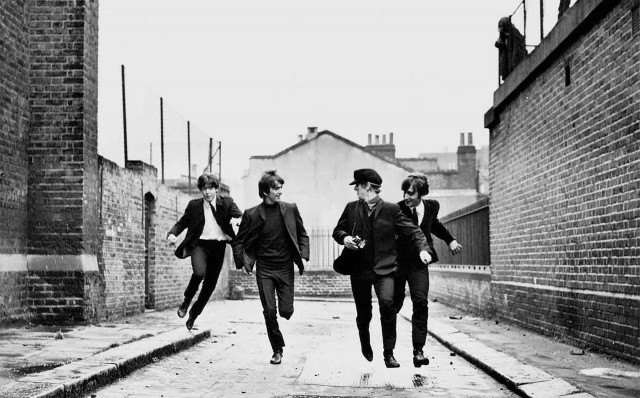
 The Beatles are invading America again with the fiftieth anniversary restoration of their debut film, the deliriously funny anarchic comedy A Hard Day’s Night. Initially released on July 6, 1964, in the UK, AHDN turned out to be much more than just a promotional piece advertising the Fab Four and their music. Instead, it quickly became a huge critical and popular success, a highly influential work that presaged Monty Python and MTV while also honoring the Marx Brothers, Buster Keaton, Jacques Tati, and the French New Wave. Directed by Richard Lester, who had previously made the eleven-minute The Running Jumping & Standing Still Film with Peter Sellers and would go on to make A Funny Thing Happened on the Way to the Forum, Petulia, and The Three Musketeers, the madcap romp opens with the first chord of the title track as John Lennon, Paul McCartney, George Harrison, and Ringo Starr are running down a narrow street, being chased by rabid fans, but they’re coming toward the camera, welcoming viewers into their crazy world. (George’s fall was unscripted but left in the scene.) As the song blasts over the soundtrack, Lester introduces the major characters: the four moptops, who are clearly having a ball, led by John’s infectious smile, in addition to Paul’s “very clean” grandfather (Wilfrid Brambell, who played a dirty old man in the British series Steptoe and Son, the inspiration for Sanford and Son) and the band’s much-put-upon manager, Norm (Norman Rossington). Lester and cinematographer Gilbert Taylor (Dr. Strangelove or: How I Learned to Stop Worrying and Love the Bomb, Repulsion, Star Wars) also establish the pace and look of the film, a frantic black-and-white frolic shot in a cinema-vérité style that is like a mockumentary taking off from where François Truffaut’s 400 Blows ends. The boys eventually make it onto a train, which is taking them back to their hometown of Liverpool, where they are scheduled to appear on a television show helmed by a hapless director (Victor Spinetti, who would star in Help as well) who essentially represents all those people who are dubious about the Beatles and the sea change going on in the music industry. Norm and road manager Shake (John Junkin) have the virtually impossible task of ensuring that John, Paul, George, and Ringo make it to the show on time, but there is no containing the energetic enthusiasm and contagious curiosity the quartet has for experiencing everything their success has to offer — while also sticking their tongues out at class structure, societal trends, and the culture of celebrity itself.
The Beatles are invading America again with the fiftieth anniversary restoration of their debut film, the deliriously funny anarchic comedy A Hard Day’s Night. Initially released on July 6, 1964, in the UK, AHDN turned out to be much more than just a promotional piece advertising the Fab Four and their music. Instead, it quickly became a huge critical and popular success, a highly influential work that presaged Monty Python and MTV while also honoring the Marx Brothers, Buster Keaton, Jacques Tati, and the French New Wave. Directed by Richard Lester, who had previously made the eleven-minute The Running Jumping & Standing Still Film with Peter Sellers and would go on to make A Funny Thing Happened on the Way to the Forum, Petulia, and The Three Musketeers, the madcap romp opens with the first chord of the title track as John Lennon, Paul McCartney, George Harrison, and Ringo Starr are running down a narrow street, being chased by rabid fans, but they’re coming toward the camera, welcoming viewers into their crazy world. (George’s fall was unscripted but left in the scene.) As the song blasts over the soundtrack, Lester introduces the major characters: the four moptops, who are clearly having a ball, led by John’s infectious smile, in addition to Paul’s “very clean” grandfather (Wilfrid Brambell, who played a dirty old man in the British series Steptoe and Son, the inspiration for Sanford and Son) and the band’s much-put-upon manager, Norm (Norman Rossington). Lester and cinematographer Gilbert Taylor (Dr. Strangelove or: How I Learned to Stop Worrying and Love the Bomb, Repulsion, Star Wars) also establish the pace and look of the film, a frantic black-and-white frolic shot in a cinema-vérité style that is like a mockumentary taking off from where François Truffaut’s 400 Blows ends. The boys eventually make it onto a train, which is taking them back to their hometown of Liverpool, where they are scheduled to appear on a television show helmed by a hapless director (Victor Spinetti, who would star in Help as well) who essentially represents all those people who are dubious about the Beatles and the sea change going on in the music industry. Norm and road manager Shake (John Junkin) have the virtually impossible task of ensuring that John, Paul, George, and Ringo make it to the show on time, but there is no containing the energetic enthusiasm and contagious curiosity the quartet has for experiencing everything their success has to offer — while also sticking their tongues out at class structure, societal trends, and the culture of celebrity itself.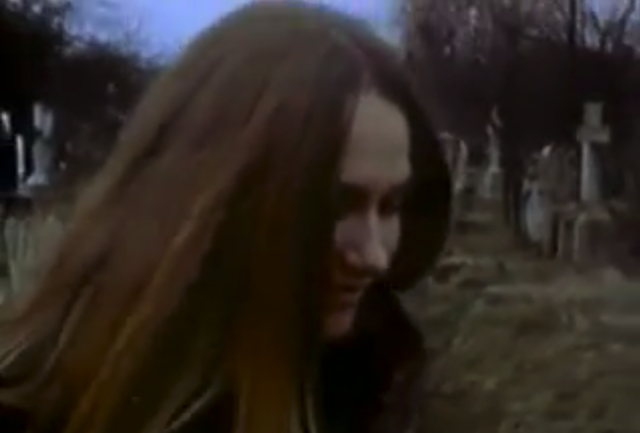
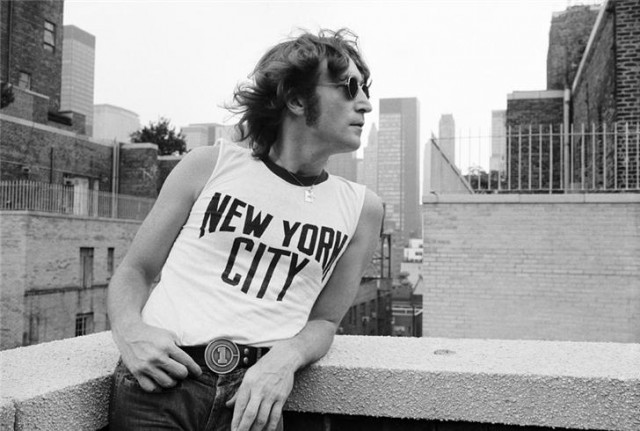
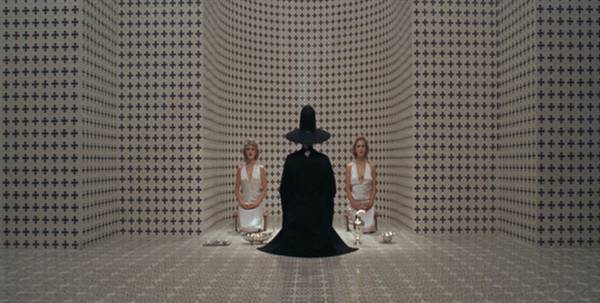
 Inspired by Rene Daumal’s Mount Analogue: A Novel of Symbolically Authentic Non-Euclidean Adventures in Mountain Climbing, Alejandro Jodorowsky’s The Holy Mountain also involves symbolically non-Euclidean adventures in mountain climbing, funneled through Carlos Castaneda, Stanley Kubrick’s 2001: A Space Odyssey, and magic mushrooms and LSD galore. What passes for narrative follows a Jesus look-alike thief (Horacio Salinas) and an alchemist with a thing for female nudity (Jodorowsky) on the path to enlightenment; along the way they encounter the mysterious Tarot, stigmata, stoning, eyeballs, frogs, flies, cold-blooded murder, naked young boys, chakra points, life-size plaster casts, Nazi dancers, sex, violence, blood, gambling, turning human waste into gold, death and rebirth, and the search for the secret of immortality via representatives of the planets, each with their own extremely bizarre story to tell. Jodorowsky, who is credited with having invented the midnight movie with the 1970 acid Western El Topo, literally shatters religious iconography in a kaleidoscopic whirlwind of jaw-droppingly gorgeous and often inexplicable imagery composed from a surreal color palette, set to a score by free jazz trumpeter Don Cherry and Archies keyboardist Ron Frangipane. (Frangipane also worked with John Lennon and Yoko Ono, who produced this film with their business manager, Allen Klein.)
Inspired by Rene Daumal’s Mount Analogue: A Novel of Symbolically Authentic Non-Euclidean Adventures in Mountain Climbing, Alejandro Jodorowsky’s The Holy Mountain also involves symbolically non-Euclidean adventures in mountain climbing, funneled through Carlos Castaneda, Stanley Kubrick’s 2001: A Space Odyssey, and magic mushrooms and LSD galore. What passes for narrative follows a Jesus look-alike thief (Horacio Salinas) and an alchemist with a thing for female nudity (Jodorowsky) on the path to enlightenment; along the way they encounter the mysterious Tarot, stigmata, stoning, eyeballs, frogs, flies, cold-blooded murder, naked young boys, chakra points, life-size plaster casts, Nazi dancers, sex, violence, blood, gambling, turning human waste into gold, death and rebirth, and the search for the secret of immortality via representatives of the planets, each with their own extremely bizarre story to tell. Jodorowsky, who is credited with having invented the midnight movie with the 1970 acid Western El Topo, literally shatters religious iconography in a kaleidoscopic whirlwind of jaw-droppingly gorgeous and often inexplicable imagery composed from a surreal color palette, set to a score by free jazz trumpeter Don Cherry and Archies keyboardist Ron Frangipane. (Frangipane also worked with John Lennon and Yoko Ono, who produced this film with their business manager, Allen Klein.)
